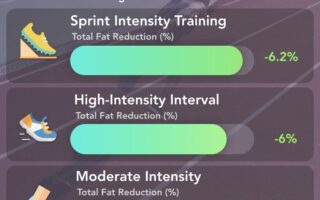Title: Unlocking the Potential: A Guide to Vizsla Training
Introduction:
In the realm of canine companionship, few breeds are as endearing and spirited as the Vizsla. With their sleek, copper-colored coats and expressive eyes, these Hungarian hunting dogs are not only visually striking but also rich in personality. Known for their boundless energy and deep affection for their families, Vizslas thrive on interaction and engagement, making proper training an essential cornerstone of responsible ownership. Whether you are a new Vizsla owner or an experienced handler seeking to enhance your pup’s skills, understanding the intricacies of Vizsla training can unlock a world of joy and connection. In this article, we will explore effective techniques, foundational principles, and the unique traits of the Vizsla that can make your training journey a fulfilling and rewarding experience for both you and your four-legged friend. Join us as we delve into the art and science of cultivating a well-behaved, happy Vizsla who embodies the very best of this remarkable breed.
Table of Contents
- Understanding the Unique Temperament of Vizslas in Training
- Essential Commands Every Vizsla Should Master Early
- Positive Reinforcement Techniques for Effective Training
- Overcoming Common Training Challenges with Vizslas
- Q&A
- In Conclusion
Understanding the Unique Temperament of Vizslas in Training
The Vizsla is a breed renowned for its spirited nature, striking a balance between energy and affection that can be both rewarding and challenging in training. Understanding this unique temperament is crucial for effective training strategies. Vizslas thrive on human interaction and need consistent engagement, making positive reinforcement techniques particularly effective. This breed responds best to training methods that incorporate play and physical activity, as maintaining their enthusiasm is key. Emphasizing short, fun training sessions can help keep their attention and motivation high, allowing them to learn new commands and tricks with ease.
When training a Vizsla, it’s important to consider their need for mental stimulation alongside physical exercises. Incorporating gadgets like puzzle toys or interactive games can prevent boredom and destructive behavior. Additionally, regular socialization with other dogs and environments creates a well-rounded dog, easing the training process. Below are some essential training components tailored for Vizslas:
| Training Component | Description |
|---|---|
| Positive Reinforcement | Use treats, praise, and affection to reward desired behaviors. |
| Short Sessions | Limit training to 5-10 minutes to maintain focus and enthusiasm. |
| Socialization | Expose them to various environments and experiences to enhance adaptability. |
| Regular Exercise | Incorporate walks, runs, and playtime to channel energy positively. |
Essential Commands Every Vizsla Should Master Early
Training a Vizsla can be a rewarding experience, especially when you focus on commands that foster a strong relationship and enhance their natural intelligence. Here are some essential commands that every Vizsla should master early on, ensuring they become well-behaved companions:
- Sit: A basic but foundational command that promotes discipline.
- Stay: Teaches your Vizsla patience and helps in keeping them safe.
- Come: A crucial command for recall, this ensures your Vizsla returns to you in any situation.
- Leave it: Important for teaching them to ignore distractions, potentially hazardous objects, or food.
Consistency and positive reinforcement are key when teaching these commands. Incorporating training sessions into your daily routine not only makes learning fun but also strengthens your bond. Below is a simple outline of an effective approach to training:
| Command | Goal | Duration |
|---|---|---|
| Sit | Establish control | 5 minutes |
| Stay | Encourage patience | 5 minutes |
| Come | Ensure safety | 10 minutes |
| Leave it | Prevent unwanted behavior | 5 minutes |
Positive Reinforcement Techniques for Effective Training
Utilizing positive reinforcement techniques is essential when training a Vizsla, as these methods not only build a strong bond but also encourage good behavior effectively. This approach focuses on rewarding desirable actions, which can include verbal praises, treats, or favorite toys. Some effective methods include:
- Clicker Training: This method uses a handheld clicker to mark desired behaviors immediately, followed by a reward, helping the dog associate the click sound with a positive outcome.
- High-Value Treats: Using favorite treats that your Vizsla doesn’t receive often can boost motivation during training sessions.
- Short Training Sessions: Keeping training sessions engaging and brief, around 5-10 minutes, prevents boredom and maintains focus.
Tracking progress is also beneficial, and creating a simple reward chart can help visualize achievements. Here’s a quick reference table that outlines potential behaviors and corresponding rewards:
| Behavior | Reward |
|---|---|
| Sitting on command | Verbal praise + treat |
| Walking calmly beside you | Favorite toy playtime |
| Coming when called | High-value treat + love |
By consistently rewarding your Vizsla for good behavior and utilizing varied techniques, you create a fun and effective training atmosphere that fosters trust and eagerness to learn, setting the stage for a well-trained canine companion.
Overcoming Common Training Challenges with Vizslas
Training a Vizsla can be a rewarding experience, but it often comes with its own set of unique challenges. These energetic and intelligent dogs can sometimes become overwhelmed during training sessions, leading to distractions and a short attention span. To address this, it’s essential to implement training techniques that cater to their needs. A few strategies include:
- Short Sessions: Keep training sessions brief but frequent to maintain their focus.
- Vary Activities: Mix up training tasks to keep things exciting and engaging.
- Positive Reinforcement: Use treats and praise to encourage desired behaviors and maintain motivation.
Another common challenge is their strong prey drive, which can make it difficult for Vizslas to concentrate on commands when distractions arise. Incorporating environmental training can help minimize this issue. Consider the following approaches:
| Method | Description |
|---|---|
| Controlled Exposures | Gradually introduce your Vizsla to distractions in a controlled setting. |
| Impulse Control Exercises | Practice commands that promote self-control, like “leave it” or “wait.” |
| Engagement Therapy | Engage their mind with puzzles and toys to redirect their focus. |
Q&A
Q&A: Mastering Vizsla Training
Q1: What makes Vizslas unique when it comes to training?
Vizslas are known for their high energy and intelligence, which can make training sessions both exciting and challenging. Their strong desire to please their owners often means they are quick learners, but their independent nature can sometimes lead to stubbornness. Understanding their unique personality traits is key to developing effective training strategies.
Q2: At what age should I start training my Vizsla?
Starting training early is crucial for a Vizsla. Ideally, introduce basic commands and socialization exercises as early as 8 weeks old. Early training helps establish good habits and strengthens the bond between you and your pup. However, it’s important to maintain a balance between training and play, as Vizslas thrive on physical activity and stimulation.
Q3: What training methods work best for Vizslas?
Positive reinforcement techniques work exceptionally well with Vizslas. Rewards such as treats, praise, and playtime can motivate them to learn and obey commands. It’s important to keep training sessions short and engaging, as their attention spans can wane if the task becomes repetitive or overly long.
Q4: How can I manage my Vizsla’s high energy levels during training?
Incorporate physical exercise into your training routine. Before a training session, a vigorous walk or a game of fetch can help burn off excess energy, allowing your Vizsla to focus better. Additionally, engaging in mental exercises, like puzzle toys or scent work, can provide the stimulation they need to stay calm during training.
Q5: What are some common challenges I might face when training my Vizsla?
Some common challenges include their strong prey drive, potential distractions from other animals, and their occasional stubborn streak. To combat these issues, consistent training in a controlled environment is essential. Gradually introduce distractions and ensure your Vizsla is comfortable with commands before progressing to more stimulating locations.
Q6: How important is socialization for my Vizsla?
Socialization is crucial for Vizslas, as it helps them become well-adjusted adults. Exposing your Vizsla to various environments, people, and other animals from a young age can prevent behavioral issues down the road. Organized puppy classes and playdates are excellent opportunities for socialization and reinforcement of training.
Q7: How can I reinforce training lessons outside of formal sessions?
Incorporate training into your daily routine by practicing commands during walks, meal times, or playtime. Consistency is key. For instance, have your Vizsla sit before meals or perform a trick before going outside. This reinforces the lessons learned and helps them understand that training is a part of everyday life, not just a scheduled activity.
Q8: What should I do if my Vizsla isn’t responding to training?
If your Vizsla isn’t responding, it might be a good idea to assess your training approach. Evaluate whether your methods are engaging enough and consider consulting a professional trainer if needed. Patience is critical, as every dog learns at their own pace. Adjusting your techniques and staying positive can lead to breakthroughs in communication.
Q9: How can I ensure that training remains a positive experience for my Vizsla?
To keep training enjoyable, vary the activities and incorporate play into sessions. Celebrate small victories with praise and treats to build your Vizsla’s confidence. Remember to be patient and maintain a calm demeanor, as a positive atmosphere fosters a love for learning, encouraging your Vizsla to engage willingly in training.
Q10: What are the long-term benefits of effective Vizsla training?
Effective training lays the groundwork for a well-behaved, balanced adult dog. A trained Vizsla is not only a joy to have in your home but also better equipped to navigate the world with confidence. Long-term benefits include enhanced communication between you and your dog, reduced behavioral issues, and a deeper bond that enhances your life together.
Whether you’re embarking on the training journey with a bubbly puppy or a spirited adult Vizsla, these strategies can help you foster a fulfilling and rewarding relationship with your four-legged companion.
In Conclusion
As we conclude our exploration into the captivating world of Vizsla training, it becomes evident that this journey is not merely about obedience commands or agility drills; it’s a partnership built on trust, respect, and mutual understanding. These affectionate and energetic companions thrive when engaged both physically and mentally, showcasing their unique personalities as they learn and grow alongside us.
Remember that each Vizsla comes with its own quirks and charm, and the training process is as much a discovery as it is an education. With patience and persistence, you’ll unlock the potential of your Vizsla, forging a bond that transcends the basics of training.
So, whether you’re embarking on these training adventures for the first time or seeking new ways to deepen your connection with your beloved Vizsla, embrace the journey. In every command taught and every tail wagged, there lies the foundation of companionship that will bring joy and enrichment to both your lives for years to come. Happy training!



